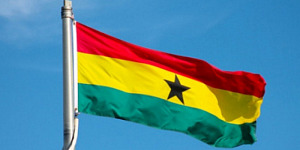Ghana's central bank left its policy rate steady at 16.0 percent but said it would not "hesitate to take immediate and decisive policy actions including on a tighter monetary policy stance, should these risks materialize and threaten to dislodge the disinflation process."
The Bank of Ghana (BOG), which has been in a monetary easing cycle since November 2016, said its monetary policy stance is still relatively tight and real interest rates in Ghana are comparatively high but there are risks to its outlook for inflation from the depreciation of the cedi.
After BOG cut its rate by another 100 basis points in late January, the cedi fell around 11 percent in February through mid-March, with BOG attributing this to seasonal pressures on the back of foreign exchange demand by importers and corporates, and sentiment over the economic outlook after the completion of the IMF-supported program and its implication for the next election cycle.
The cedi was trading at 5.35 to the U.S. dollar today, down 9 percent this year.
Although the full pass through of this depreciation to inflation has yet to be assessed, BOG noted the overshooting of the exchange rate had corrected to 5.2 percent at the end of March compared with 8 percent as of March 19, and is of the view that a slowing pace of disinflation and upside risks to the outlook for inflation are not enough to dislodge inflation expectations.
Since November 2016 BOG has cut its key rate by 10 percentage points as inflation has steadily declined.
Ghana's inflation rate rose to 9.2 percent in February from 9.0 percent in January but this is well down from over 19 percent in March 2016, helped by the tight monetary policy stance, and inflation is still within BOG's medium-term target band and inflation expectations remain well-anchored.
Ghana's economy remains relatively strong, BOG said, adding the negative output gap seems to be closing at a relatively modest pace and 2018 growth is projected at 5.6 percent after average growth of 6.1 percent in the first three quarters, with 2018 non-oil output growing at 5.8 percent.
For 2019 growth is projected to rise to 7.6 percent, with the composite index of economic activity showing growth of 3.2 percent in January, up from 2.4 percent in December.
Helped by slightly higher crude oil and gold prices amidst lower cocoa prices - Ghana's three main exports - Ghana's trade surplus improved to 1.3 percent of GDP in the first quarter from 1.1 percent in the same period last year, leading to a 0.3 percent surplus in the current account.
Together with inflows from Ghana's $3 billion Eurobond in March, the balance of payments is estimated to show a surplus of some US$3.135 billion, or 4.6 percent of GDP, for the first quarter. Excluding the Eurobond proceeds, the surplus is seen at $449 million.





















































